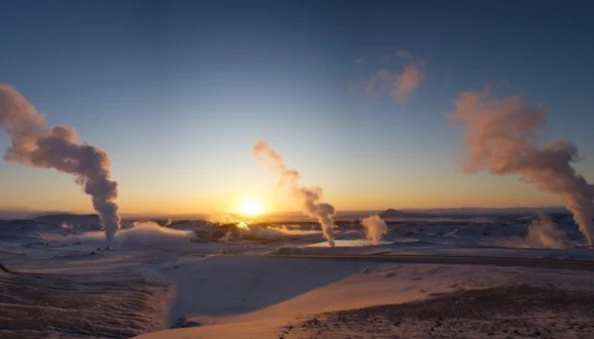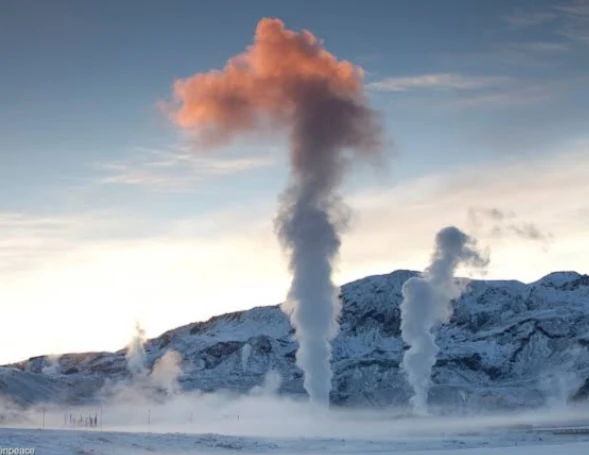Europe's geothermal energy installed capacity:
Here's an overview of Europe's geothermal energy installed capacity:
Electricity generation:
- Total installed capacity: As of 2021, Europe's total installed capacity for geothermal electricity generation is around 1.1 gigawatts (GW). This represents just over 0.3% of the continent's total electricity generation capacity.
- Top countries: Italy, Iceland, and Turkey are the leading European countries in terms of geothermal electricity generation capacity, with Italy having the most at around 940 MW.
- Growth prospects: While geothermal electricity generation is still a relatively small source of energy in Europe, it is expected to grow in the coming years, driven by factors such as increasing awareness of its environmental benefits and technological advancements. The European Commission has set a target of increasing the share of renewable energy in the EU's energy mix to at least 40% by 2030, and geothermal energy is seen as one of the technologies that can help achieve this goal.
Heating and cooling:
- Installed capacity: Geothermal energy is also used for heating and cooling buildings, and the installed capacity for this purpose is much higher than for electricity generation. In 2021, the EU had a total installed capacity of 2.2 GWth for geothermal district heating and cooling.
- Top countries: Sweden, Germany, and Finland are the leading European countries in terms of geothermal district heating and cooling capacity.
- Growth prospects: The use of geothermal energy for heating and cooling is also expected to grow in the coming years, as it is a clean and efficient way to heat and cool buildings. The European Commission has set a target of increasing the use of renewable energy in heating and cooling to 50% by 2030, and geothermal energy is seen as one of the technologies that can help achieve this goal.
Challenges:
- Exploration and development costs: The high costs of exploration and development can be a barrier to the deployment of geothermal energy.
- Public perception: There is some public concern about the potential environmental impacts of geothermal energy, such as the risk of induced seismicity. However, these risks are generally low and can be mitigated through careful planning and engineering.
Geothermal energy has the potential to play a significant role in Europe's transition to a low-carbon future. However, overcoming the challenges mentioned above will be important for realizing this potential.
Table of Geothermal installed by country in Europe
Here's a table showing the top geothermal energy (electricity and heating/cooling combined) installed capacity by country in Europe,
| Country | Geothermal Capacity (MWth) | Share of EU Total (%) |
|---|---|---|
| Italy | 6,717 | 29.2 |
| Iceland | 2,429 | 10.5 |
| Turkey | 1,653 | 7.2 |
| France | 910 | 3.9 |
| Germany | 655 | 2.8 |
| Portugal | 246 | 1.1 |
| Greece | 230 | 1.0 |
| Spain | 218 | 0.9 |
| Switzerland | 169 | 0.7 |
| Austria | 143 | 0.6 |
Notes:
- This table includes both geothermal electricity generation and geothermal district heating/cooling capacity.
- The data source is the European Geothermal Energy Council (EGEC).
- The EU total installed geothermal capacity in 2021 was approximately 23,000 MWth.
Frequently Asked Questions about Europe's Geothermal Energy Installed Capacity
1. What is geothermal energy, and why is it a good option for Europe?
- Geothermal energy is heat from the Earth's interior. It's a renewable resource that can be used to generate electricity and heat.
- Europe has a significant geothermal potential, particularly in volcanic regions and areas with high tectonic activity. This makes geothermal energy a promising source of clean and reliable power for the continent.
2. What is the current state of geothermal energy installed capacity in Europe?
- Europe's geothermal energy installed capacity has been steadily increasing in recent years. While it still represents a relatively small portion of the continent's total energy mix, there have been significant developments in geothermal power generation, especially in countries like Iceland, Italy, and France.
3. What are the main challenges to the growth of geothermal energy in Europe?
- High upfront costs: Developing geothermal power plants can be expensive, particularly in areas with deep geothermal reservoirs.
- Environmental concerns: Geothermal power plants can have potential environmental impacts, such as water pollution and induced seismicity.
- Technical challenges: Drilling deep into the Earth to access hot water or steam can be technically challenging.
- Regulatory barriers: In some European countries, regulations and permitting processes can hinder the development of geothermal projects.
4. What are some of the leading countries in geothermal energy development in Europe?
- Iceland: Iceland is a global leader in geothermal energy, with a high percentage of its electricity generated from geothermal sources.
- Italy: Italy has a long history of geothermal development and is a significant producer of geothermal energy in Europe.
- France: France has been expanding its geothermal energy capacity, particularly for district heating applications.
- Germany: Germany has geothermal potential, but its development has been slower due to various factors, including deep geothermal reservoirs and regulatory challenges.
5. What is the future outlook for geothermal energy in Europe?
- The future of geothermal energy in Europe looks promising. With increasing demand for renewable energy and advancements in geothermal technology, Europe has the potential to significantly expand its geothermal capacity.
- Governments and international organizations are supporting the development of geothermal energy through policies, investments, and research.
6. How can geothermal energy contribute to Europe's energy transition?
- Geothermal energy can play a crucial role in Europe's transition to a low-carbon energy system by providing a reliable, clean, and baseload source of electricity and heat.
- Geothermal energy can help reduce Europe's dependence on fossil fuels, mitigate climate change, and enhance energy security.


